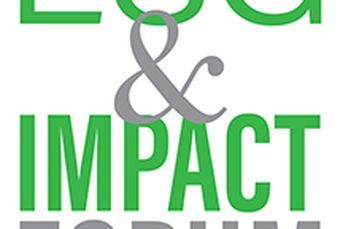Expect slow but steady economic growth worldwide
https://www.investmentnews.com/wp-content/uploads/assets/graphics src=”/wp-content/uploads2017/03/CI10920933.JPG” Joe Davis, Ph.D. Global Chief Economist Vanguard’s economic team, led by Global Chief Economist Joe Davis,…
Vanguard’s economic team, led by Global Chief Economist Joe Davis, Ph.D., projects what various market and economic events the coming year may bring along with challenges and opportunities for investors. The team’s study spans the global macroeconomic environment, inflation, monetary policies, interest rates, bond and stock markets, and asset allocation considerations.
Read the team’s global market outlook summary below, and find its in-depth analysis in the comprehensive research paper, Vanguard’s economic and investment outlook.
Global outlook summary
Global economy: Low growth, but not stagnation
Since the end of the Global Financial Crisis, economic growth has fallen short of historical averages and consistently disappointed policymakers. Deflationary shocks have continued to roil the markets, and much of the world’s bond market offers negative yields. Some still believe the world is headed for Japanese-style secular stagnation. And yet the modest global recovery—at times frustratingly weak—has endured, proving the most ardent pessimists wrong.
Noting that forecasters having downgraded global growth outlooks for at least five consecutive years, we believe that the risks to consensus outlook of 3% are more balanced this year. We continue to anticipate “sustained fragility” for global trade and manufacturing, given China’s ongoing rebalancing and the need for structural business-model adjustments across emerging market economies. We do not anticipate a Chinese hard landing in 2017, but we are more bearish than consensus on China’s medium-run growth prospects.
Our growth outlook for developed markets remains modest but steady. Increasingly sound economic fundamentals supported by U.S. and European policy should help offset weakness in the United Kingdom and Japan. For the United States, 3% GDP growth is possible in 2017, even as job growth cools. Our long-held estimate of 2% U.S. trend growth is neither “new” nor “subpar” when accounting for lower population growth and exclusion of the consumer-debt-fueled boost to growth between 1980 and the Global Financial Crisis.
Inflation: Global disinflationary forces waning for now
As we have previously written, many developed economies are likely to struggle to consistently achieve 2% core inflation over the medium term, given digital technology and excess commodity capacity in China and elsewhere. That said, some of the most pernicious deflationary forces are cyclically moderating. U.S. core inflation should modestly “overshoot” 2% in 2017, prompting the Federal Reserve to raise rates. U.K. inflation is also set to overshoot following the post-Brexit depreciation of sterling. By contrast, euro area inflation will only return to target levels gradually.
Monetary policy and interest rates: Central banks grapple with their limits
The Federal Reserve is likely to pursue a “dovish tightening,” hawkishly raising rates to 1.5 % in 2017 while leaving the federal funds rate below 2% through at least 2018. Elsewhere, further monetary stimulus is unlikely, as the benefits are waning and, in the case of negative interest rates, can prove harmful to the very credit-transmission channel that monetary policy attempts to stimulate. The European Central Bank and Bank of Japan each enacted additional quantitative easing in 2016 and, as we’ve previously written, remain unlikely to raise rates this decade.
Elsewhere, further monetary stimulus seems possible, but its benefits may be waning and, in the case of negative interest rates, potentially harmful to the very same credit-transmission channel that monetary policy attempts to stimulate. Even so, the European Central Bank (ECB) and Bank of Japan (BoJ) could yet add to the quantitative easing implemented in 2016.
Chinese policymakers have arguably the most difficult task: engineering a “soft landing” by lowering real borrowing costs and the real exchange rate without accelerating capital outflows. The margin of error is fairly slim, and policymakers should continue to provide fiscal stimulus to the economy this year to avert a hard landing. The most important policy measure we are monitoring is the pace of reforms for China’s state-owned enterprises, which are key sources of overinvestment and deflationary excess capacity.
Investment outlook: Muted, but positive given low-rate reality
Vanguard’s outlook for global stocks and bonds remains the most guarded in ten years, given fairly high equity valuations and the low-interest-rate environment. We continue to believe that global bond yields will not increase materially from year-end 2016 levels.
Bonds. The return outlook for fixed income remains positive yet muted. In line with past outlooks, our long-term estimate of the equilibrium federal funds rate remains anchored near 2.50%, slightly below that of the Fed’s “dot plots.”1 As a result, our “fair value” estimate for the benchmark 10-year U.S. Treasury yield still resides within the 2.00%–2.25% range, even with two to three near-term increases in the policy rate. As we stated in 2015, even in a rising-rate environment, duration tilts are not without risks, given global inflation dynamics and our expectations for monetary policy. Recent low volatility and compressed corporate bond spreads point to credit risks outweighing those of duration.
Stocks. After several years of suggesting that low economic growth need not equate with poor equity returns, our medium-run outlook for global equities remains guarded in the 5%–7% range. That said, our long-term outlook is not bearish and can even be viewed as positive when adjusted for the low-rate environment.
Asset allocation. Vanguard’s outlook for portfolio returns is modest across all asset allocations when compared with the heady returns experienced since the depths of the Global Financial Crisis. This guarded but not bearish outlook is unlikely to change until we see a combination of higher short-term rates and more favorable valuation metrics. In some ways, the investment environment for the next five years may prove more challenging than the previous five, underscoring the need for discipline, reasonable return expectations, and low-cost strategies.
1 “Dot plots” refers to charts published by the Federal Open Market Committee (FOMC) in the Fed’s Summary of Economic Projections, showing points where FOMC participants, who are kept anonymous, believe the federal funds rate should be over the next few years, in the absence of economic shocks.
Notes
•All investing is subject to risk, including the possible loss of the money you invest.
•Investments in bonds are subject to interest rate, credit, and inflation risk.
Learn more about reprints and licensing for this article.






